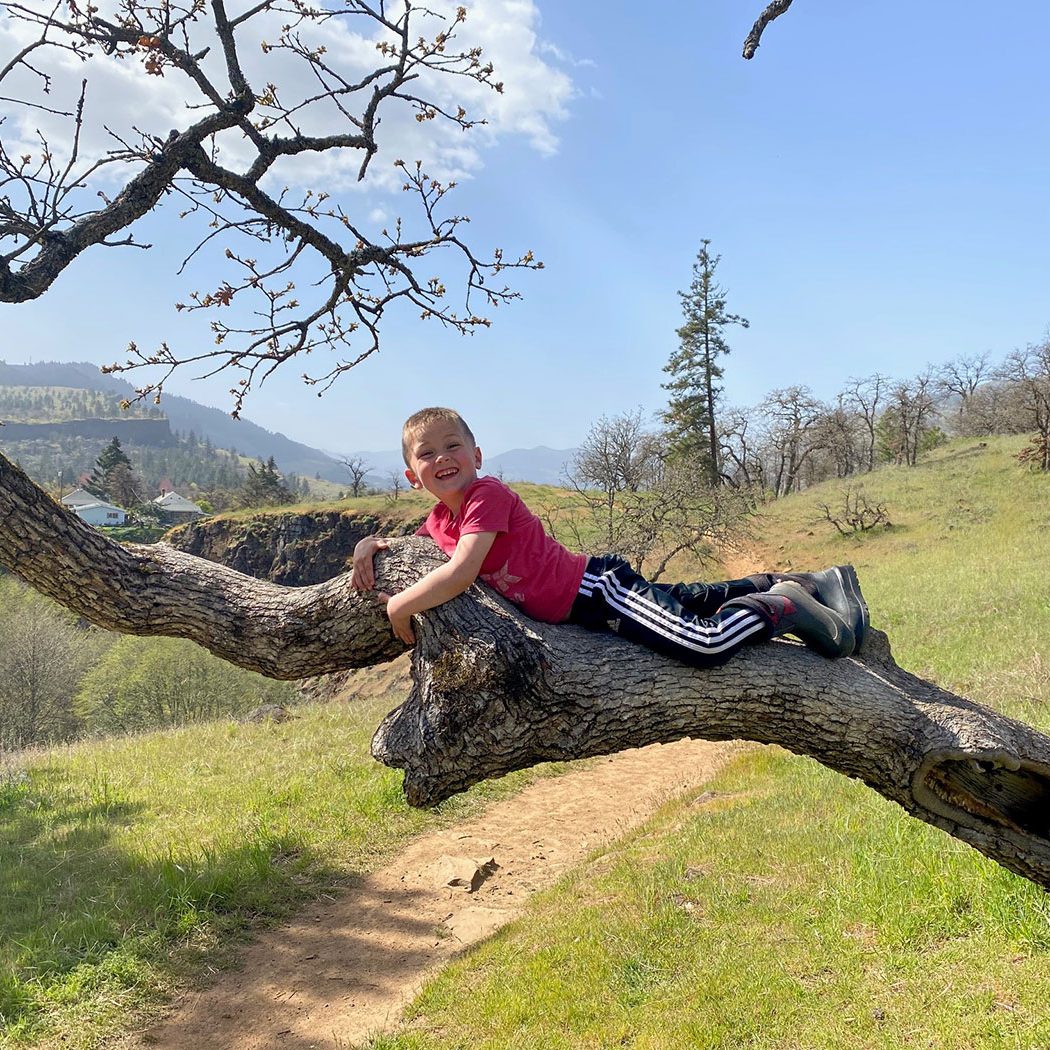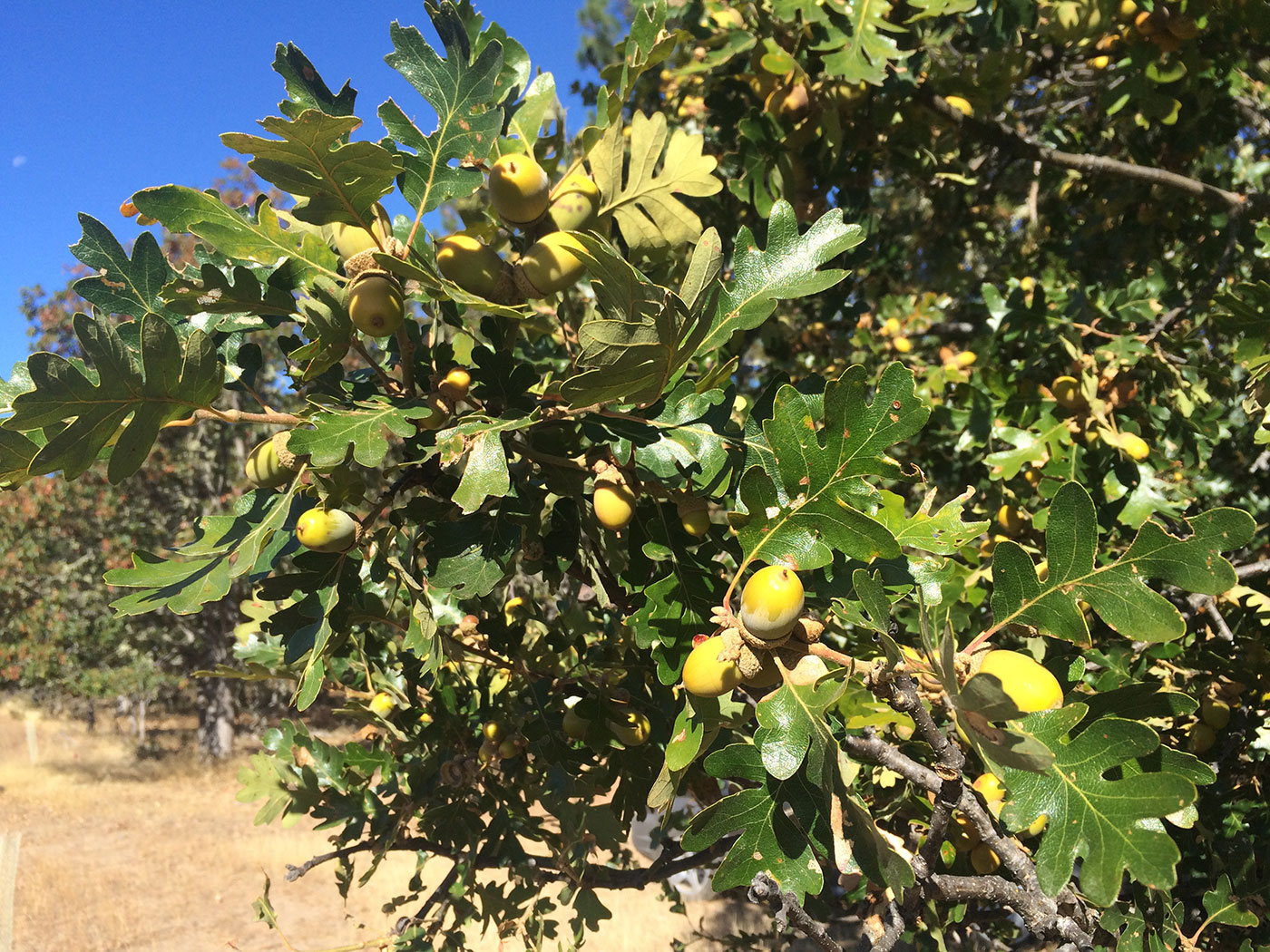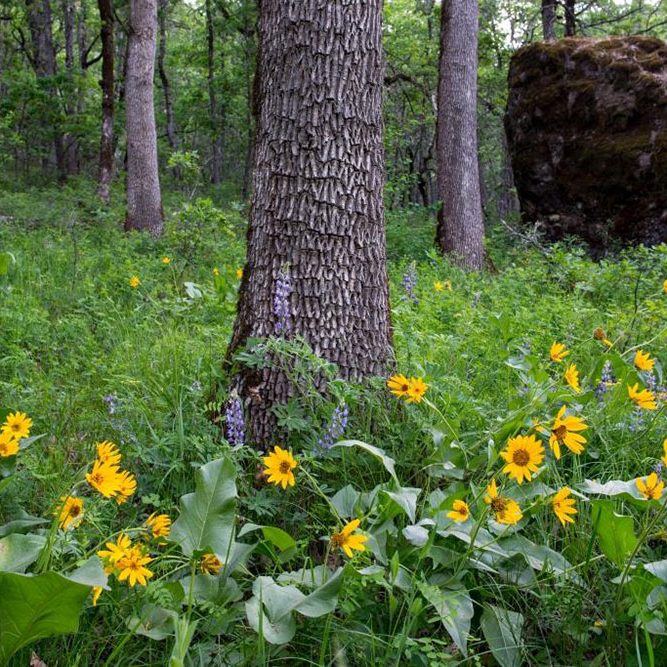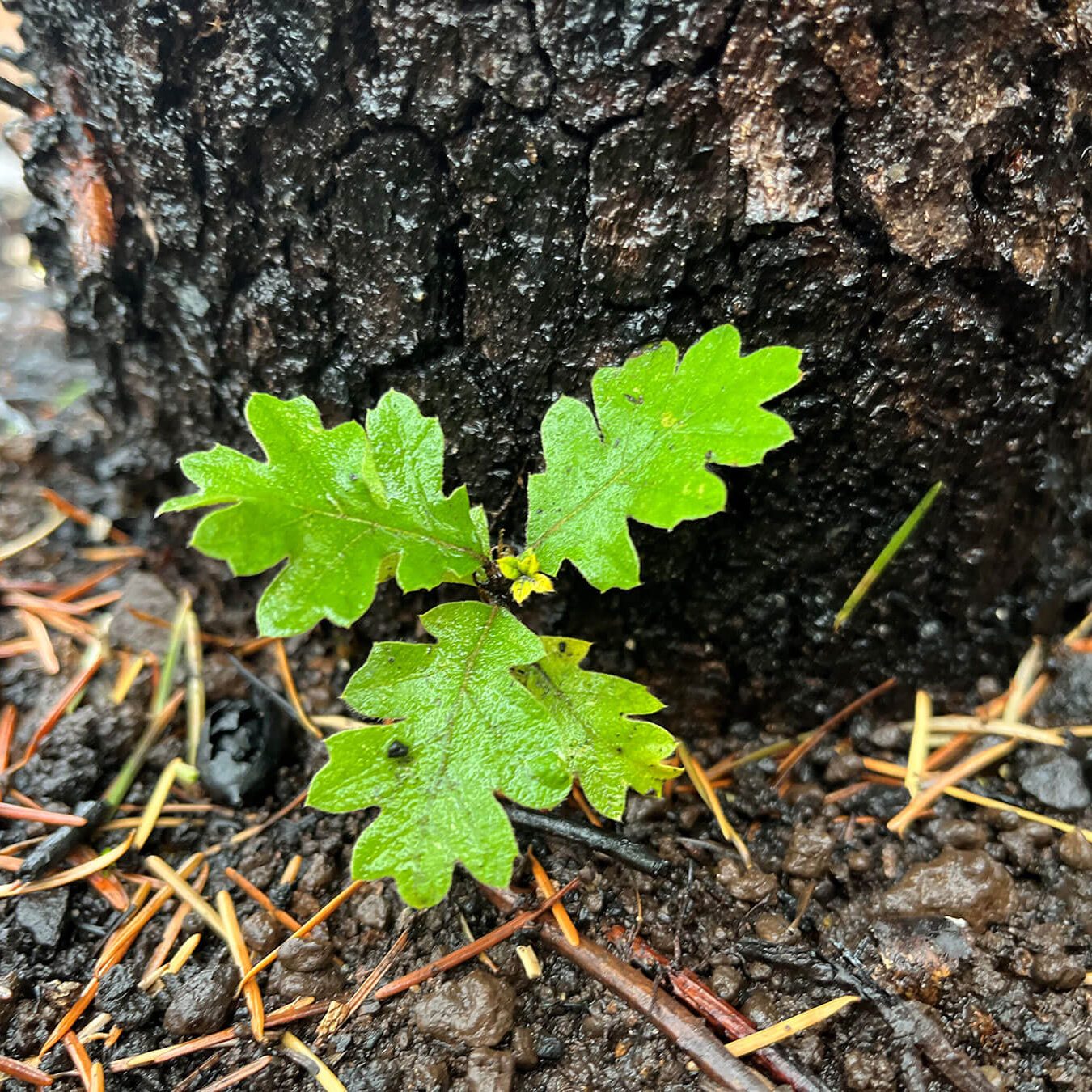Why Oaks
Because OAKS GIVE LIFE.
Oaks have thick bark and waxy leaves that resist burning, and often sprout back after being burned.
Oak cavities and bark provide safe homes for wildlife. Acorns provide the richest plant protein in the woods.
A steep decline in rainfall over lively terrain creates a tapestry of unique habitats, generating biodiversity and climate resilience!
Flowering plants and grasses grow under the oaks. They feed pollinators and house insects — the base of a food chain.
Foods and medicines grow and live near the oaks — including deer, elk, roots, and berries.
Sun exposure and rainfall dramatically impact what grows where in the East Cascades.
They Support People
Oaks grow at lower elevations where people are concentrated and have since time immemorial. Oaks provide shade in a harsh environment for people and livestock, provide a beautiful backdrop for popular mountain biking and hiking trails, are adapted to fire and resist burning, exhibit hardiness in response to grazing, support abundant game species like deer, elk, and turkey, and provide first foods like acorns. The relationship between people and oaks is reciprocal. Indigenous people use cultural burning and other lifeways to shape oak habitat and in turn, oak systems provide shade, firewood, tools, medicines, food, and forage. While indigenous lifeways cannot be replicated by non-tribal people, our partnership seeks to learn respectfully and steward oak habitats in the spirit of reciprocity.


Acorns
Acorns have been utilized as a food resource for indigenous tribes since time immemorial. Acorns are also an important food resource for a variety of wildlife with their high protein levels. Acorn crops can drive spikes in the populations of the animals eating them, including bear, deer, turkey, jays, squirrels, and woodpeckers. In a study on geographic variation of acorn production, riparian oaks in the East Cascades had the most productive acorn crops across the entire Pacific Northwest from British Columbia to northern California. When oaks drop their limbs, the resulting cavity shelters wildlife who then disperse acorns far from the parent tree— representing an ancient reciprocal relationship. Oaks have masting events which produce sporadic, large crops of acorns so plentiful seed predators can’t keep up.
White oaks are definitely the best for wildlife… because of the acorns. And because when there’s windstorms, frost and ice storms — which are frequent in the Gorge — the branches fall off and rot sets in. And it creates these cavities that are perfect habitat for a number of species.
Bill Weiler, former wildlife biologist
Cavities
Oak cavities house wildlife like birds and small mammals. The western gray squirrel (listed as endangered in Washington) uses the hollow cores of oak trees as natal dens, birthing and rearing their young beyond the reach of most predators. Oaks are often hollow at their core and can continue to live and grow with just 10% of their leafy crown. In this way, they simultaneously provide the resources of a living AND a dead tree. Oaks give life!

We were taught that everything around you has a life. That without it, you wouldn’t have a life and you wouldn’t have an identity. So we have to respect this old tree that is there for us, and we give thanks for it.
Levina Wilkins, Yakama Elder, in a 2018 presentation to ECOP

Plants, Bark, and Fungus
The fungus and plants growing in oak woodlands provide a variety of foods for insects, birds, and wildlife. Oak associated bunchgrasses grow deep, bulky roots, storing carbon underground and leaving space for flowering plants to grow between. Even bare dirt provides richness in these systems, leaving space for ground nesting bees to nest in. The sloughing bark of an old oak tree creates narrow, protected gaps perfect for roosting bats. Deep fissures in the aging bark help insulate the tree from the heat of fire and provide surfaces for rare lichens. Lichens are high in carbohydrates and become food for wildlife in the winter. There are lichens on oaks in the Columbia River Gorge that have never been documented anywhere else in the world.
I love oaks for their individuality - each tree has its own unique form. I love oaks for their longevity - sheltering generations of people. Most of all I love oaks for their generosity - providing shelter and sustenance for such a wide array of birds and animals.
ECOP member
Climate Change
Oaks mitigate climate change and tolerate a wide range of growing conditions. They prefer seasonal drought during the summer, allowing them to establish in hot, dry places where they offer shade in areas that would otherwise be treeless. Because oaks are fire resistant, they may tolerate intensifying wildfire, continuing to provide habitat value where other trees may perish. A large tap root stores carbon underground where it won’t be lost to fire. If a severe fire consumes the crown, these tap roots allow a tree to recover quickly, continuing to sequester carbon and provide habitat almost immediately following a fire.

I aspire to be more like an oak, to grow through disturbance, to benefit my community, and to be adaptable and resilient in the face of change.
